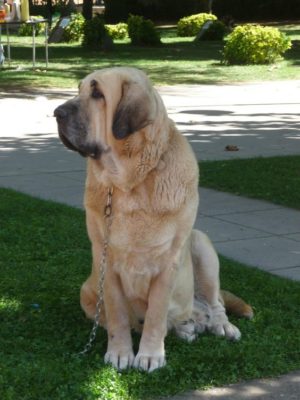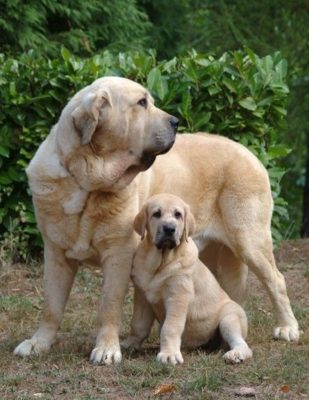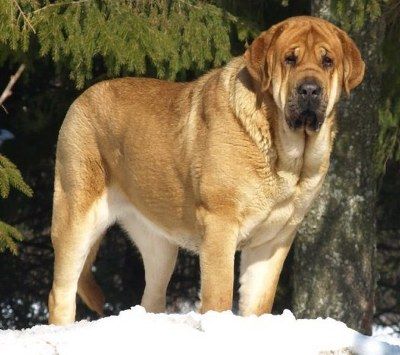Spanish Mastiff
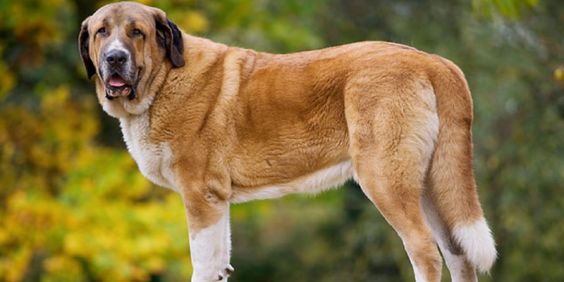
The Spanish Mastiff has many working abilities; he is always eager to help around the house and perform various duties. It quickly becomes attached to family members and will always protect them. In a close circle, the dog never shows aggression, but only kindness and tenderness. Spanish Mastiffs love to be petted, praised, and paid attention.
Table of Contents
Breed Information
| Another Name | Mastin Español, Mastín Español de campo y trabajo, Mastín Ganadero, Mastín Leonés, Mastín Extremeño |
| Origin | Spain |
| Height | Males from 77 cm Females from 72 cm |
| Weight | Males from 60 kg Females from 50 kg |
| Fur | Exceptionally thick, medium length, tight to the body |
| Color | Preferably single-colored sable, wolf, black, red, yellow, and deep colors |
| Lifespan | 9-11 years |
| FCI Classification | Pinscher and Schnauzer – Molossoid and Swiss Mountain and Cattledogs |
| Group | Guard dogs, protection dogs |
| Price | $500-4000 |
Breed Photos
Origin History
The Spanish Mastiff comes from Extremadura (an autonomous community in southwestern Spain). It is unknown exactly when the breed originated, but scientists claim that the Spanish Mastiff appeared a very long time ago.
The first representatives of the breed were not so great in size, were engaged in the protection of herds, were great herding dogs.
These dogs could even defeat wild bears in a fight, drive herds from one place to another for several days, and do just fine without food. For a long time, the Spanish Mastiff was exclusively a working dog; it could quickly herd a flock of thousands of sheep.
It was only in the twentieth century, after the Madrid exhibition, that cynologists drew attention to this breed and registered it for the first time. The species was on the verge of extinction during the Spanish Civil War. The shepherds who kept sheep and continued to use the Spanish Mastiff in their households helped preserve the dog. The breed was officially recognized in 1982.
Appearance
The breed’s appearance is very intimidating because the dog is large, robust, and muscular. There is sexual dimorphism in the species: males are outwardly taller and fatter than females. The minimum height of the male – 77 cm, bitches – 72 cm. The weight of males can be from 60 kg, the weight of bitches – from 50 kg and reach the mark of 120 kg.
The coat of the Spanish Mastiff is medium length, stiff, tight-fitting. The coat can be apricot, gray, pale, red, black, tiger (dark and light) color, white spots on paws and chest are allowed.
Character
The Spanish Mastiff has many working abilities; he is always eager to help around the house and perform various duties. It quickly becomes attached to family members and will always protect them. In a close circle, the dog never shows aggression, but only kindness and tenderness. Spanish Mastiffs love to be petted, praised, and paid attention.
The Spanish Mastiff senses a person’s mood well and will never impose but will willingly sleep at his master’s feet after a hard day. He has a great love for children and the elderly.
Despite its formidable appearance, the Mastiff is challenging to bring out of its equilibrium. He always keeps his wits about him and is aggressive only when necessary.
Care
Because of its vast size, the Spanish Mastiff is uncomfortable living in an apartment. The best option is a country house with the free territory.
A thick coat requires a lot of care. It should be brushed three times a week. During the molting period, it is better to use a special furminator. To better remove dead hair, you can moisten the dog’s coat with a little water and conditioner.
Regularly check the hair for tangles; if they form, it is better to go to the hairdresser. It is recommended to bathe not more often than once every three months. Nails should be trimmed once a month. The dog’s teeth should also be kept clean: twice a week, it should be brushed with a special brush or finger clip.
Training
The Spanish Mastiff is easy to train. It is enough to be an authority for him and at first show your strong character. He quickly remembers commands and happily obeys them.
You should never yell or force your pet to obey commands – this may be perceived as aggressive. If the Spanish Mastiff obeys well, you should praise him and give him something good to eat after training.
Common Diseases
Regularly treat the hair of the dog against ticks and fleas, timely vaccination. Even though the Spanish Mastiff’s health and immunity are healthy, it can still suffer from cataracts, stomach congestion, hip dysplasia, and gonarthrosis.
Nutrition
Nutrition should be balanced, complete. You can feed both natural food and quality food. In the first months of life, the dog should be given foods that contain a lot of calcium to bind the bones.
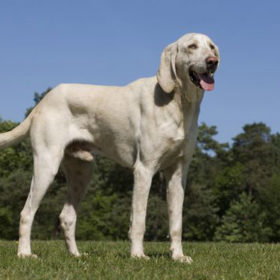 Billy
Billy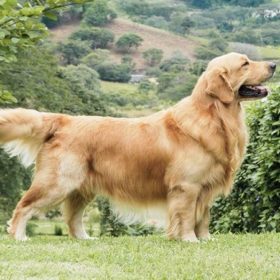 Golden Retriever
Golden Retriever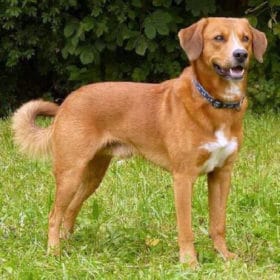 Austrian Pinscher
Austrian Pinscher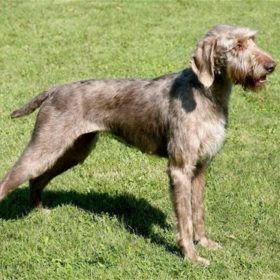 Slovak Rough-haired Pointer
Slovak Rough-haired Pointer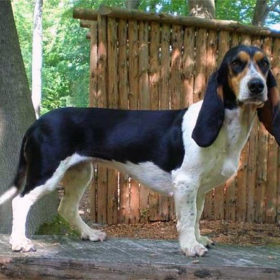 Small Bernese Hound
Small Bernese Hound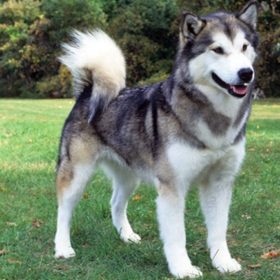 Canadian Eskimo Dog
Canadian Eskimo Dog